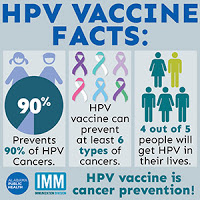“Human papillomavirus (HPV) is the most common sexually transmitted infection, with 80 million Americans currently infected and 14 million new cases of infection each year,” Daniel notes, but only about two-thirds of 13-to-17-year-olds start the HPV vaccine series, and fewer than half have up-to-date vaccinations. Kentucky’s rates are much lower; less than half get any shots and only a third get the full series. Probably due to that, the state has the highest rate of HPV-related cancers in the nation.
Rural HPV vaccination rates are 11 percent lower than urban rates, partly because rural areas have fewer health-care providers, Daniel writes in the Journal of Rural Health. He says that gap could be filled by pharmacies, which are more widespread than doctors’ offices and open longer hours. “In the 2018 President’s Cancer Panel report on HPV vaccination for cancer prevention, pharmacies were specifically recommended as a way to increase vaccine accessibility,” he writes. “Most pharmacies are also ideally suited for immunizations because of their inherent infrastructure and storage capacity for various medications. Many pharmacies offer vaccines such as flu, pneumonia, and shingles, and therefore, they have established immunization protocols that can be easily adapted to HPV.”
That’s also important for HPV immunization because research has shown that rural parents are less likely to be aware of HPV and the vaccine. Community pharmacists “frequently have personal relationships with many local individuals,” Daniel writes. “Therefore, they can function in both education and reinforcement regarding the importance of HPV vaccination. . . . In the exploration of alternative settings to increase HPV vaccination, community pharmacies have been significantly overlooked. Particularly in rural settings, these pharmacies have vast potential to reach under-served, disparate populations and serve crucial roles in addressing community health care needs and filling resource gaps.”
